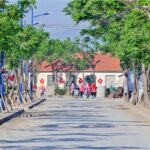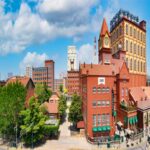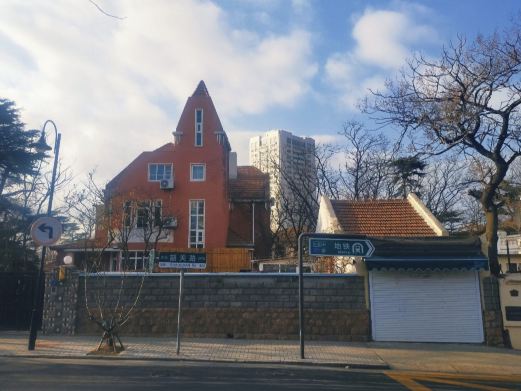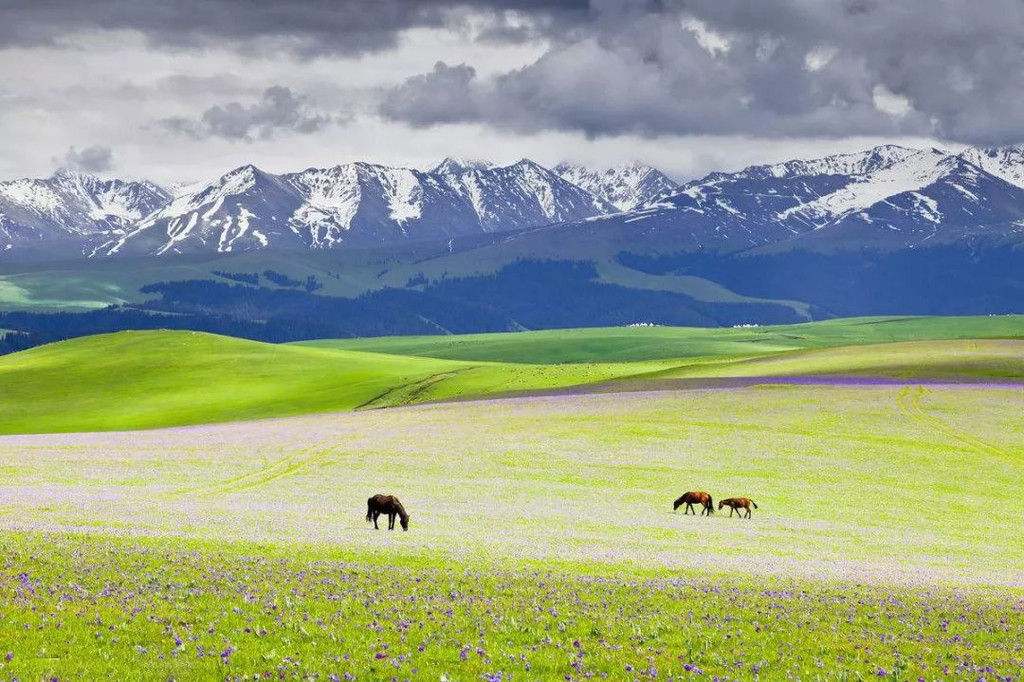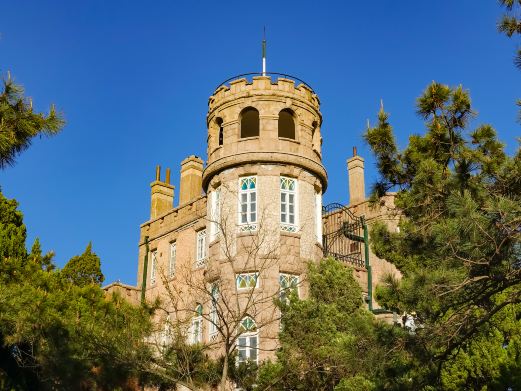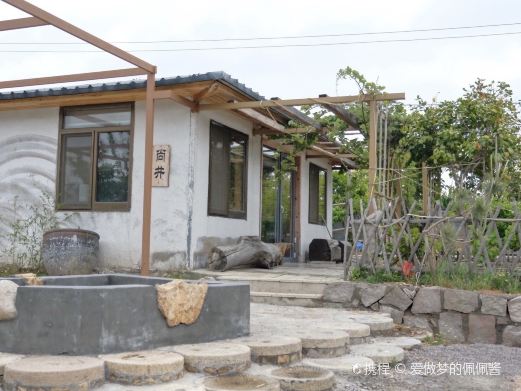The Confucius Temple is located in Qufu City, a vast temple dedicated to the worship of Confucius, which was rebuilt on the site of his former residence. Qufu’s Confucius Temple is a World Cultural Heritage site and one of the four major ancient architectural complexes in China, alongside the Forbidden City in Beijing, the Summer Palace in Chengde, and the Dai Temple in Tai’an. The complex boasts grand and extensive architecture, with numerous historical sites and stories.
Travel tips are available at the tourist service hall and Confucius Temple Square, where guides are recommended to provide a clearer understanding of the historical anecdotes of these ancient sites. If you visit in the morning, you can enjoy the opening ceremony at 8 a.m. outside the southern gate of the Confucius Temple, featuring actors dressed in ancient costumes. At 5 p.m. (or 5:30 p.m. during the peak season), there is a closing ceremony, but performances are usually suspended during the Spring Festival (subject to official announcements on the scenic area’s website).
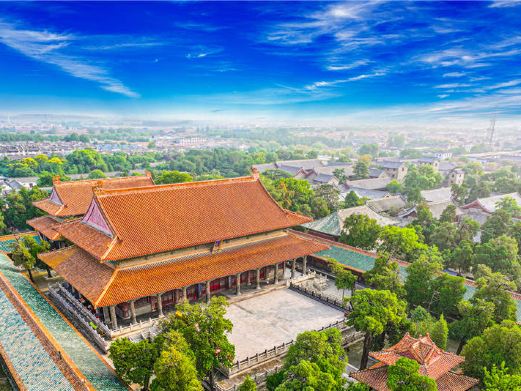
It is important to note that local scams are common, with many tourists encountering taxi drivers, rickshaw masters, or guides who deceive them into visiting high-fee and obscure man-made attractions or restaurants. Do not easily trust their promotions. It is also advisable to avoid dining around the scenic area, as many restaurants near the Confucius Temple are known for overcharging.
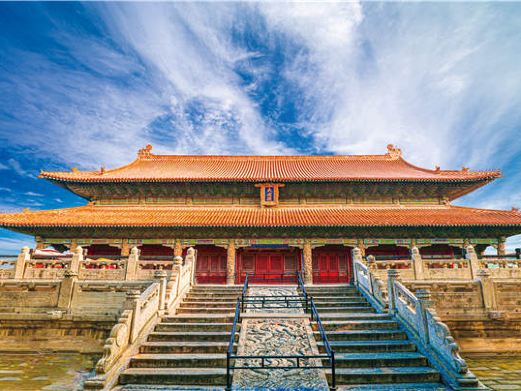
A guide to the Confucius Temple includes nine courtyards with over a hundred buildings symmetrically arranged on both sides of the central axis. After entering the first gate, ‘Lingxing Gate’, one can see the layers of gates leading into the depths. You will then pass through the Shengshi Gate, Hongdao Gate, Dazhong Gate, and Tongwen Gate, each separated by lush courtyards. On either side of the Dazhong Gate, there are corner towers, and on both sides of the Tongwen Gate, there are two large stone tablets, known as the famous Four Ming Dynasty Imperial Steles.

Following the Tongwen Gate, the tall building is the ‘Kuiwen Pavilion’, a library building that dates back to the Song Dynasty. Beyond the Kuiwen Pavilion, you can see thirteen stele pavilions housing over fifty steles, mostly recording the repairs and sacrifices to the temple by emperors of various dynasties. Further ahead is the Dacheng Gate, inscribed with the words ‘Dacheng Gate’, which are the imperial script of Emperor Yongzheng of the Qing Dynasty. The highlight here is the interlaced eaves between the Dacheng Gate and the adjacent stele pavilions. Beyond the Dacheng Gate is a pavilion called ‘Xingtan’, built by Confucius’s descendants to commemorate his teachings.
Nowadays, many tourists come to the Confucius Temple to burn incense and pray for blessings every day. Among them, the incense in front of Dacheng Hall is quite prosperous. In the sleeping hall in the backyard of Dacheng Hall, Qi Guan’s family, the wife of Confucius, is enshrined. In the Sacred Traces Hall, there are stone carved comic strips recording the deeds of Confucius. In addition, on the west road of Dacheng Hall are buildings for sacrificing to Confucius’ parents. On the east road are Confucius’ former residence, Lu Bi and so on. Among them, ‘Lu Bi’ is a short low wall. It is said that during the period when Qin Shihuang ‘burned books and buried Confucian scholars’, the descendants of Confucius hid Confucius’ bamboo slips in the wall. During the period of Emperor Wu of Han Dynasty, bamboo slips such as The Analects of Confucius and Classic of Filial Piety were found here. Scenic area activities In all dynasties, the Confucius Temple has been a place for sacrificing to Confucius. Nowadays, sacrificial activities to Confucius are still continuous. In recent years, usually from September 26 to October 10 every year, the Confucius Temple in Qufu will hold a grand ceremony for sacrificing to Confucius. At that time, there will be large-scale temple music and dance activities. Many people wearing Hanfu and high crowns can be seen participating in the grand ceremony, and people from all walks of life will come to worship Confucius. Opening hours Open all year round from 08:30 to 16:30; open from 07:40 to 17:00 on National Day. Preferential policies The elderly: People aged 60 and above can visit the scenic area for free (no need to exchange tickets with their ID cards. If using an elderly card, tickets need to be exchanged), free. Military personnel: Active-duty soldiers, retired military cadres, fire rescue personnel and retired soldiers can visit the scenic area for free with their ID cards and valid certificates., free. Survivors of martyrs: Survivors of martyrs, survivors of soldiers who died in the line of duty and survivors of soldiers who died of illness (survivors include the spouses, parents or dependents, children of martyrs, soldiers who died in the line of duty and soldiers who died of illness, as well as siblings who are obligated to support them) can visit the scenic area for free with their ID cards and valid certificates. , free. Disabled people: Disabled people can visit the scenic area for free with their ID cards, disability certificates (the second-generation disability certificate issued by the China Disabled Persons’ Federation) and disability military certificates (the 2014 new version of disability military certificate issued by the Ministry of Civil Affairs of the People’s Republic of China) (tickets need to be exchanged); for blind people, disabled people with both lower limbs and people with severe disabilities of grade one or two, one accompanying person is exempted (tickets need to be exchanged). , free. Children: Children under 6 years old (inclusive) or under 1.4 meters in height (inclusive) are free of charge, free. Students: Students over 1.4 meters in height and under 18 years old (inclusive) can purchase half-price discount tickets with their ID cards or student ID cards; full-time undergraduate and below students can purchase half-price discount tickets with their student ID cards., half price; Scope of application For alumni and freshmen of Qufu Normal University, Jining University, Qilu Institute of Technology and Qufu Far East Vocational and Technical College. Implementation process for free visits to the Three Confucius Sites by alumni of colleges and universities in Qufu (1) Alumni of colleges and universities in Qufu can go to the ticket exchange office of the ticket hall of the Three Confucius Sites in front of Wanren Palace Wall with the original of their graduation certificates and the original of their ID cards for verification and exchange for one real-name ticket.
Alumni from universities in Qufu who have graduated since 2002 can provide their graduation certificate number, name information, and original ID card. After staff log into the China Higher Education Student Information and Career Center (www.chsi.com.cn) and enter the online degree verification system, they can verify the credentials. After verification and ticket exchange, alumni can enter the park with their original ID card and ticket through security check.
Advocating universities in Qufu to issue a unified alumni card (including electronic alumni card) to all graduates. Alumni holding the alumni card and their ID card can directly verify and enter the park without needing to exchange tickets. Alumni from universities in Qufu can visit the San Kong scenic area for free without any limit on the number of times per year. Free access for high-level talents: High-level talents from Shandong Province and Jining City can visit the scenic area for free with their ID card and ‘Shandong Talent Card’ or ‘Jining City Sacred Land Talent One Card’. Free access for faculty and staff: Teachers in service can visit the scenic area for free with their ID card, ‘Teacher Qualification Certificate’, and ‘Professional Technical Qualification Certificate’. Teachers who have not yet obtained the ‘Professional Technical Qualification Certificate’ can visit for free with their ID card, ‘Teacher Qualification Certificate’, and a training certificate (or an appointment letter, report notice, or other valid documents). Free access for Confucius descendants: Descendants of Confucius and their spouses who are not from Qufu can visit the scenic area for free (with their ID card, marriage certificate, or household registration book, ticket exchange required). Free access for Jining Tourism Benefit Card and Qufu Citizen Card holders: Holders of the ID card and Jining Tourism Benefit Card or Qufu Citizen Card can visit the scenic area for free (excluding special periods when free access is not allowed as stipulated by the card issuer). Additional free access information: All documents and certificates required for ticket exchange must be original. Yan Temple, Zhou Gong Temple, Shouqiu Shaohao Mausoleum, Mengmu Forest, Zhusi Academy, and Lianggong Forest cultural relics scenic area are open to the public for free. Visitors can enter the park for free after registration with a valid document, and each free scenic area can accommodate up to 500 people at a time. The above information is for reference only, and specific information should be based on the disclosure of the scenic area on the day. Service facilities: WIFI – Account: QFSK; Password: log in via WeChat public account; Coverage: Full coverage of the scenic area. Restrooms: There are multiple restrooms within the Confucius Temple scenic area, with clear signs along the way.

